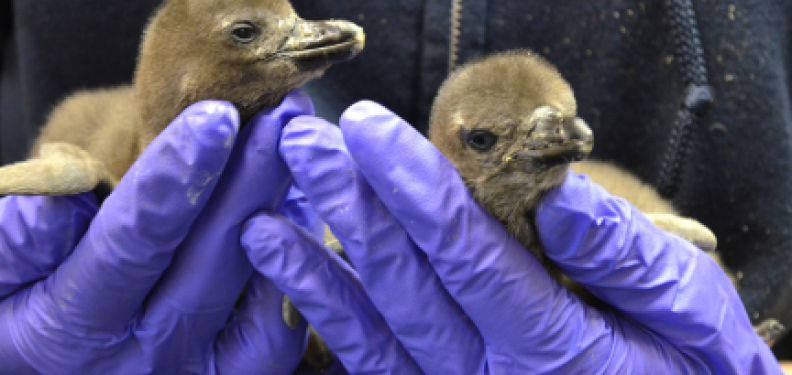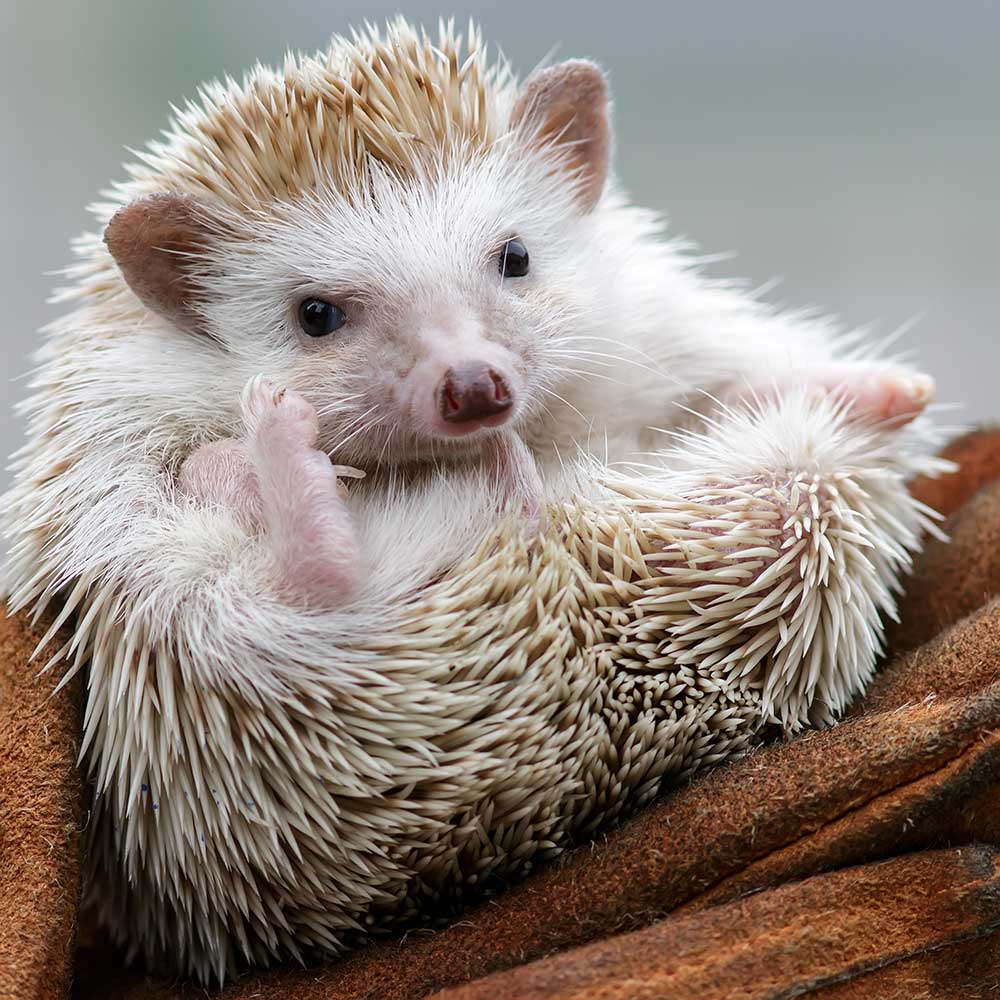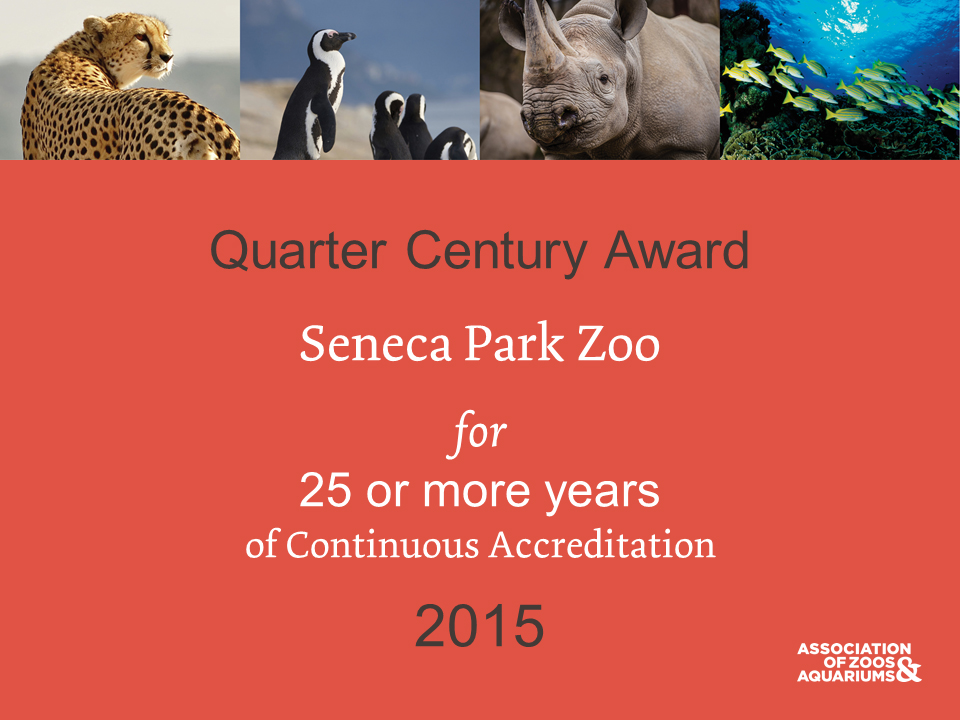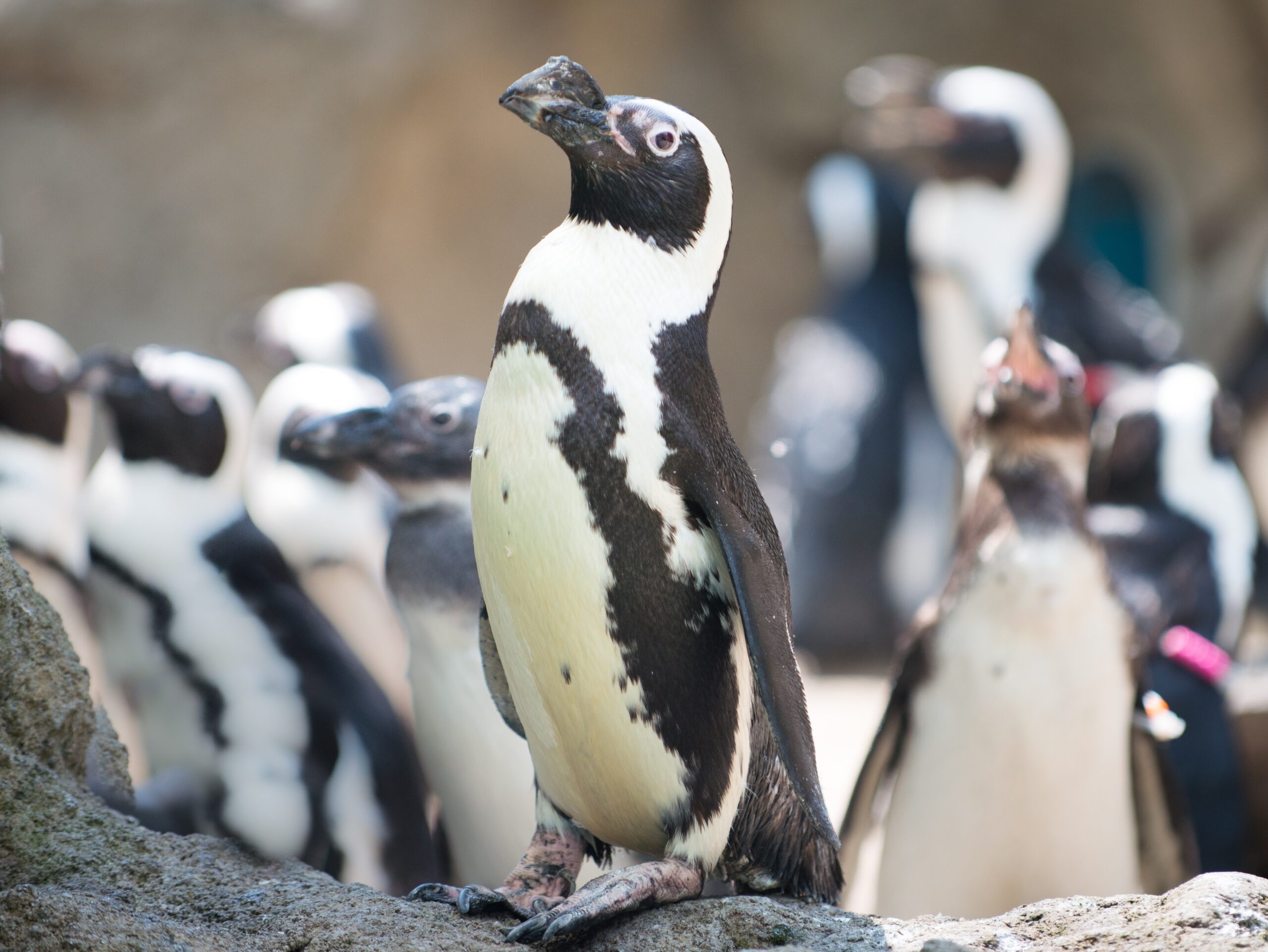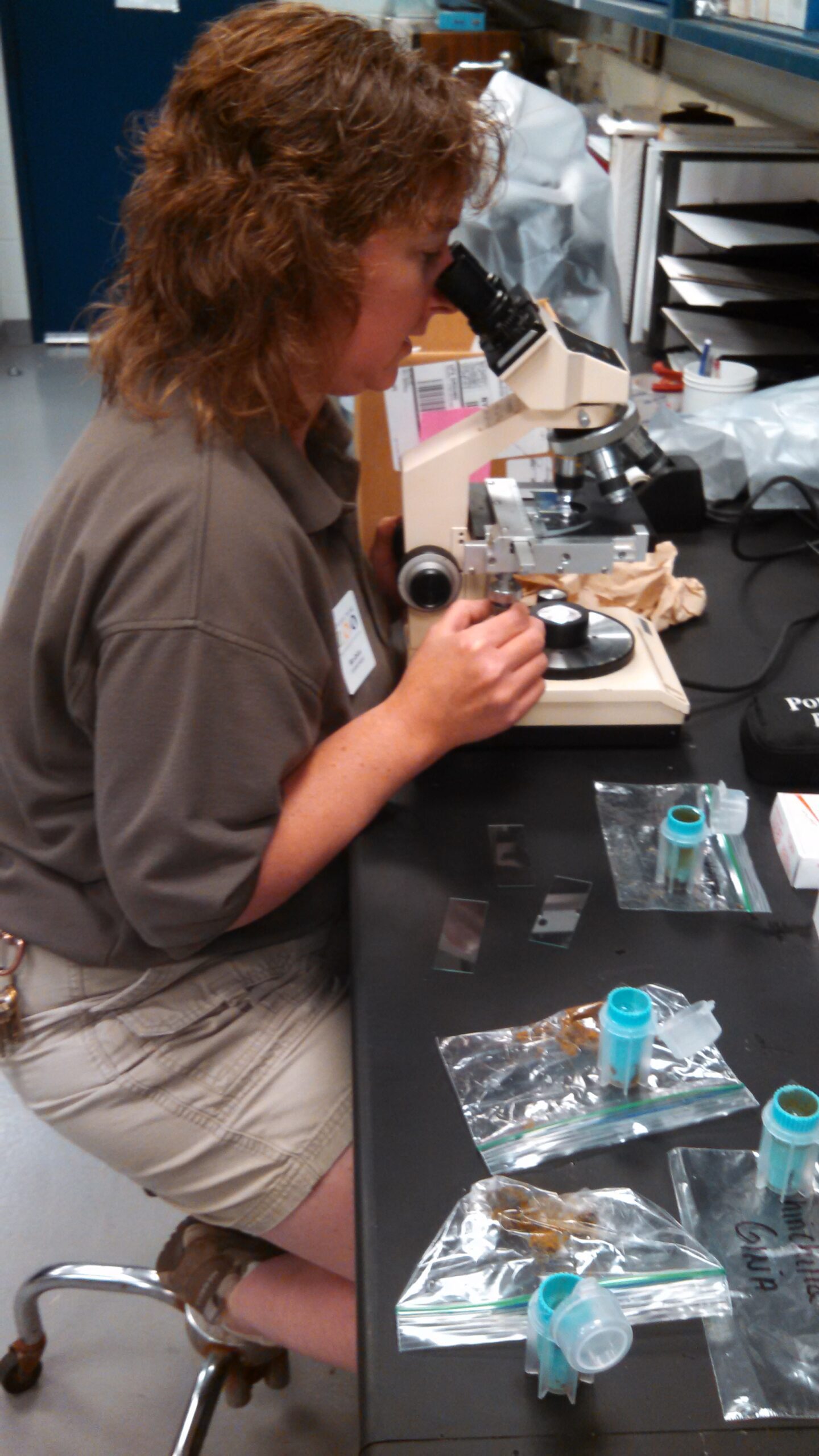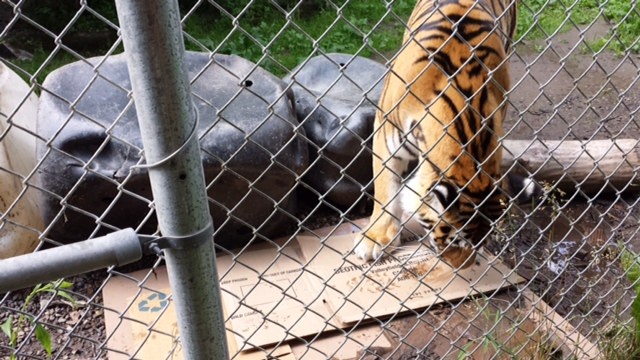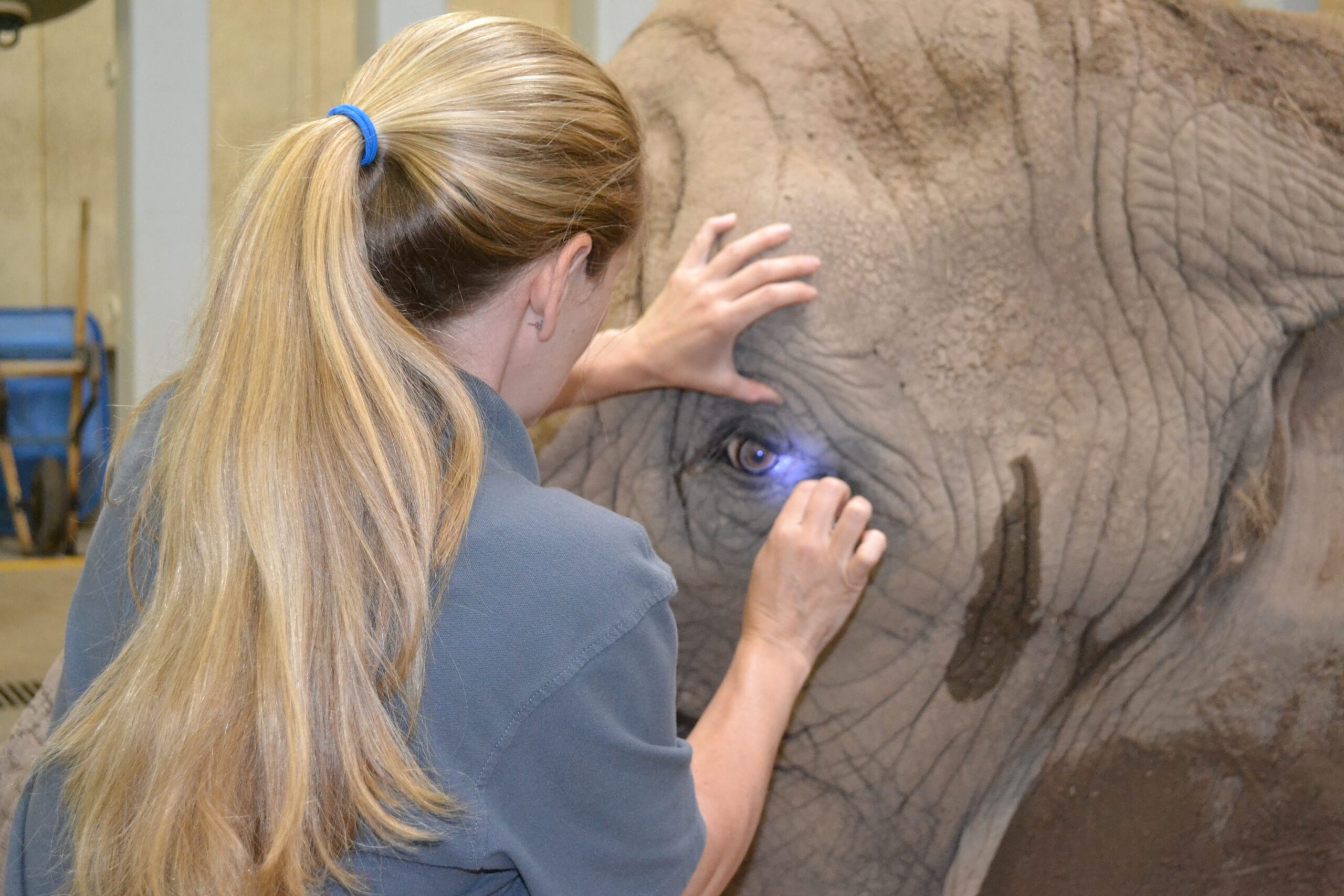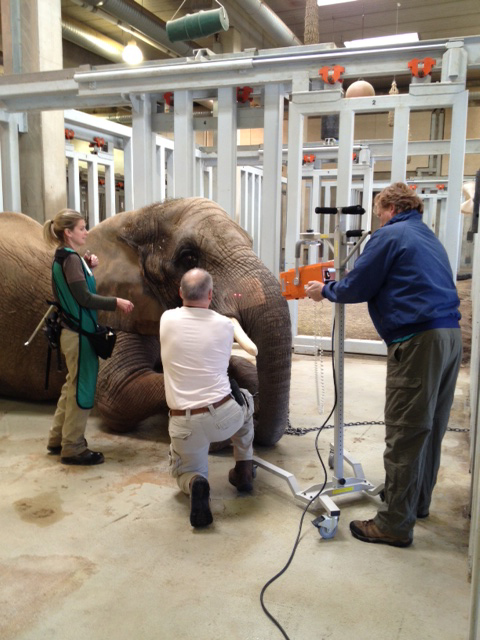If you ask zoo keepers what they do, you will most likely get a different answer from each of us. The role of a zoo keeper once focused on the general care of the animals: they cleaned cages and fed the inhabitants. But today, that aspect of our day is only the tip of the iceberg.
The core of our responsibilities remains the general care of the animals, but the definition of “general care” has changed. Cleaning enclosures is more than just “picking up.” When cleaning enclosures, zoo keepers are now more aware of disinfectants and the pathogens they protect against. We focus on giving the animals an environment that is both sanitary and comfortable. Adequate bedding, shelter and easy access to food and water are a must.


Photo by Marie Kraus
Feeding the animals at the Zoo is no easy task. Every animal has different needs and we offer a wide range of diets to meet those needs. Preparing an animal’s diet can take a large portion of our day. We can weigh up to 100 pounds of fish and 50 pounds of meat in one day. The fruit and vegetables we go through would fill a refrigerator and more. I can’t even count the number of insects we pass out.


Photo by Kelli O’Brien
Training is becoming the cornerstone of animal care at the Zoo. Training programs can be as simple as an animal moving from one enclosure to another, or can be as elaborate as asking an elephant to present its feet for a trim. Training not only provides the animals with the mental stimulation they need but also helps us to accomplish other added responsibilities.


Photo by Kelli O’Brien
Medical care is just as important for a zoo animal as it is for people and their pets. The dedication of zoo keepers to keep their animals healthy is paramount. Vaccinations, daily medications and even anesthesia are all achieved through training and the bonds that form between zoo keeper and animal. Zoo keepers are the first line of defense when it comes to the animal’s health.


Photo by Tina Fess


Photo by Ken Traub
We all like to have fun and explore new things. Enrichment is just that: a way for our animals to have fun. We provide new toys, scents, puzzles and surprises that keep the animals guessing as to what may come next.


Photo by Kelli O’Brien


Photo by Tina Fess
The list of jobs that a zoo keeper does can go on and on. Once our daily animal care is done we focus on making the grounds look good, help with minor maintenance issues, serve on a variety of committees, and even extend our reach beyond the borders of the Zoo by serving on Species Survival Plan committees through the Association of Zoos and Aquariums and other national and international groups.
A day in the life of a zoo keeper is a busy one. The list of things to do never ends. The dedication and commitment of the zoo keepers keeps that list moving forward. Most of us, if asked, would say there is no place we would rather be. It is both a privilege and an honor to be in the company of a zoo animal.
–Robin English, Zoologist

